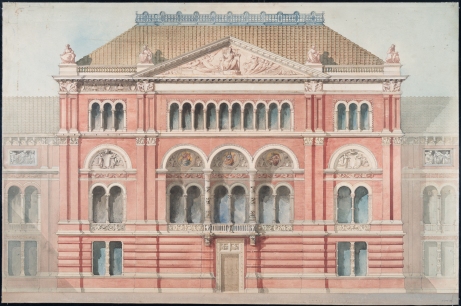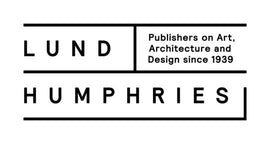‘Designing the V&A’: some reflections by the author

Godfrey Sykes and Francis Fowke, Design for the decoration of the South Kensington Museum, c.1865, © Victoria and Albert Museum, 2017
It may seem strange that the largest object in the Victoria and Albert Museum is not in the care of a curator. The building itself is a masterpiece of Victorian and Edwardian art and design, indeed, it is the most elaborate and complex museum building in Britain. Fortunately, many curators have fallen in love with different aspects of it and occasionally we get together like a club to share our research. Paintings curators know the importance of the decorative schemes by Lord Leighton, Edward Burne-Jones and others; sculpture curators share their enthusiasm for the statues around the facades ; ceramics curators enthuse about the extensive use of majolica, mosaic and colourful floor tiles in the decor and architectural historians keep coming up with new attributions for the related designs in their care. The opening of a new entrance to the V&A in June 2017 provided the opportunity to pull this research together in a book, and to share this enthusiasm with the public. More specifically, the Heritage Lottery Fund’s grant included funding for staff to help catalogue and digitize the designs collection and present an exhibition in the Architecture Gallery devoted to the best of the designs.
I had written a guidebook to the V&A many years ago and one of the most popular sections was a tour of the building itself. This new project, ‘Designing the V&A’, gave me the chance to develop a more detailed account of the building and its decoration, based on the wealth of designs, many of which had never been published before. There were several surprises. First, there is the sheer beauty of designs by important Victorian artists that have somehow slipped through the standard accounts of their work, perhaps because they do not relate to their well-known oil paintings. Second, I was surprised at the difference between the designs by the architect Aston Webb that won the competition for the completion of the V&A in 1891, and the actual building that opened in 1909. The Edwardian grand entrance and adjacent marble halls look far more like the work of the runner up, John Belcher, than Webb’s own designs. While construction was delayed by lack of government funding Webb clearly looked over Belcher’s shoulder for a fresh vision, and some very practical benefits to the new floor plans. The third main surprise was to discover how early on the reaction set in against the Victorian decoration. I had assumed that the covering up and cladding of the ceramic and wrought iron features, the removal of stained glass and the insertion of flat ceilings was symptomatic of the rise of Modernism in the 1930s, and the preference for letting works of art ‘speak for themselves’ in a ‘neutral environment’. But no, the reaction set in back in Edwardian times. Today we tend not to see any difference between Victorian and Edwardian taste but the V&A makes it clear. I hope this book reveals the potential of this stunning building to a new generation of visitors and staff.
Julius Bryant
Julius Bryant is Keeper of Word and Image at the V&A, responsible for the National Art Library, and for Prints, Drawings, Paintings and Photographs.
Julius Bryant introduces the book in a short video interview here on our youtube channel.
Designing the V&A: The Museum as a Work of Art (1857-1909) is available in hardback from our website, £35 including free UK postage.


